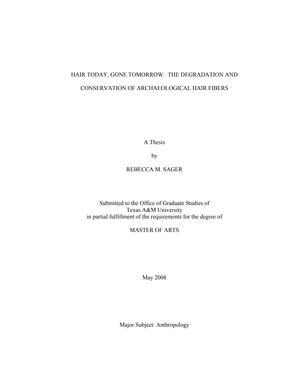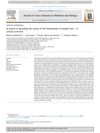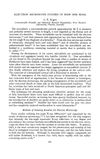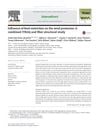Hair Today, Gone Tomorrow: The Degradation and Conservation of Archaeological Hair Fibers
May 2009

TLDR Acidic sandy clay damages archaeological hair the most, while dry conditions preserve but make it brittle; silicone oil can help keep the hair flexible.
The document from May 2008 by Rebecca M. Sager focuses on the degradation and conservation of archaeological hair fibers, including human hair, coarse and fine wool, and mohair. It was found that acidic sandy clay burial conditions caused the most damage to hair fibers, while arid environments preserved their appearance but increased brittleness. Silicone oil treatments were tested and showed positive results in making fibers more flexible and supple, suggesting this method as a viable conservation technique. The study also involved experiments with hair fibers in various environments, indicating that underwater and open air conditions led to significant degradation, while arid conditions were more favorable for preservation. The silicone oil treatment was successfully applied to a Victorian era watch fob and hair fibers from the Kittern shipwreck, although different components of composite artifacts may require different conservation approaches. The research provides a foundation for future studies on hair fiber degradation and conservation.



